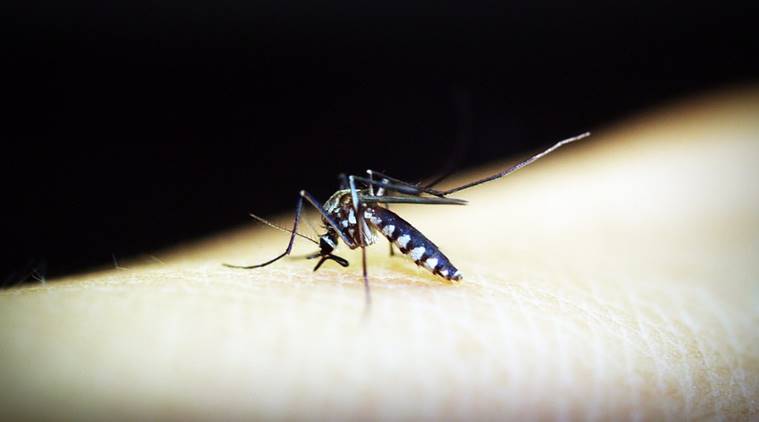Stay updated with the latest - Click here to follow us on Instagram
Malaria, chikungunya on a decline as dengue cases rise: Govt data
The Ahmedabad Rural district medical officer, Narendrasinh Rathod, too, reported that malaria was on the decline while comparing the data of 2017-18 and 2018-19, while dengue has been on the rise.
 Even as the health department targets a malaria-free state by 2022, this year (till August 26), 6,927 people tested positive for generic malaria. (Source: File Photo)
Even as the health department targets a malaria-free state by 2022, this year (till August 26), 6,927 people tested positive for generic malaria. (Source: File Photo)
Vector-borne diseases malaria and chikungunya have seen a decline in the thirty-second week of the year, while dengue appears to be on the rise in the state as compared to the same period in 2018, according to state health department officials.
Dr B S Jesalpura, joint director in charge of state’s National Vector-Borne Disease Control Programme, said, “Vector-borne diseases tend to rise after monsoon. Malaria has been declining and if it continues to rain, we can expect numbers to decline further. In case of dengue, we are expecting a rise till September. Such diseases are expected to go down by mid-October.”
Jesalpura added that the office of the health department has not received any reports of death due to any vector-borne diseases this year. “We saw some media reports on deaths in some areas but we have not received any such reports. As per our guidelines, a patient’s death will be considered as due to vector-borne disease, if that is the only diagnosis. If a patient tests positive for malaria and suffers a heart attack, the cause of death will not be malaria but heart attack. Co-morbidity is not factored in,” he said.
Even as the health department targets a malaria-free state by 2022, this year (till August 26), 6,927 people tested positive for generic malaria, 225 for Falciparum malaria, 1,059 for dengue and 200 for chikungunya, across the state. Of these, all the cases of chikungunya were reported in the 32nd week of August. “We are monitoring the situation.” said Jesalpura. The Ahmedabad Rural district medical officer, Narendrasinh Rathod, too, reported that malaria was on the decline while comparing the data of 2017-18 and 2018-19, while dengue has been on the rise. “In 2017-18, 54 people tested positive while in 2018-19 until now, 34 positive malaria cases were reported. No chikungunya case was reported in Ahmedabad rural district,” said Rathod.
Explaining the untraceability among reported cases, Rathod explains, “Sixteen people tesed positive for dengue in 2017-18 while in 2018-19, we had 24 cases of which six were reported between January and February 2019. Six other cases were untraceable. This happens when, say, a patient comes from elsewhere and provides a local address during their treatment. When we visit the address, we don’t find the patient.”
Past records of the disease help the health department in targeted approach and detection. Speaking about preparedness, Rathod adds, “We conducted surveys across Ahmedabad rural twice a month in March, April and May. We also inspected the patients and residences of those who tested positive in 2017-18.”
An epidemiologist working with the state government said on condition of anonymity, “Chikungunya and dengue are largely urban diseases, while malaria affects all. So you will see higher numbers of dengue and chikungunya in corporation areas. Mosquitos carrying dengue virus can only fly a distance of 300-400 metres. In that periphery, the population density is higher for municipal corporation areas compared to rural areas. One spoon of water is sufficient for the larvae. So urban areas are invariably affected.”
This is evident in the data for vector-borne diseases in the Ahmedabad Municipal Corpora-tion limits. AMC areas seem to have done better this month this year (data available until August 24), when compared with August 2018, while the numbers far exceed in Ahmedabad Rural.







